The line between genius and insanity is a thin one, right? Well, the Swiss LMG25 was well build and effective, but the MP41 and MP41/44 fell off the edge into silliness. It was adopted in 1941 by the Swiss army, when they realized that they really ought to have a submachine gun.
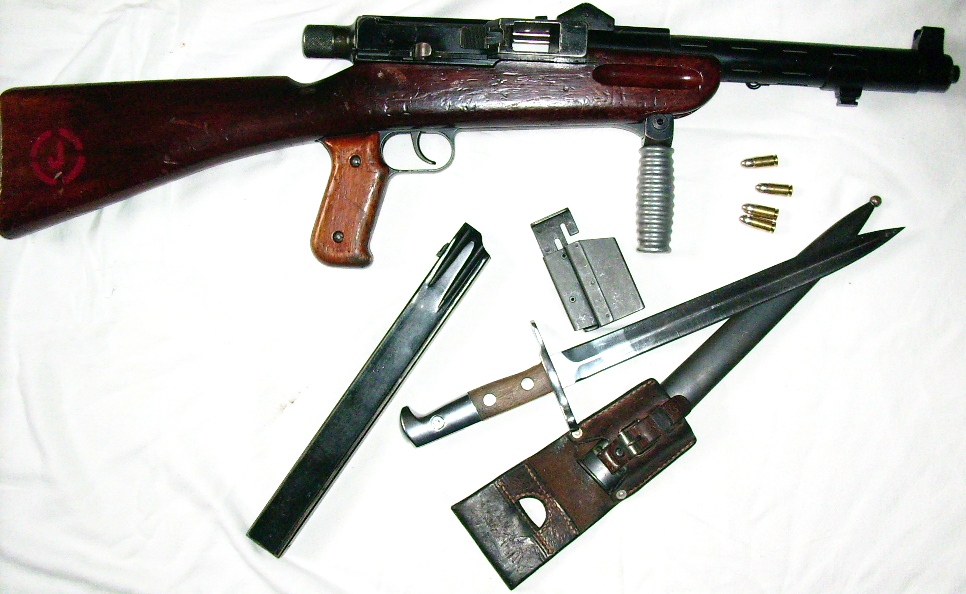
The MP41 (not to be confused with the German MP41, which was a completely unrelated gun) was designed by Adolf Furrer, who really, really like toggle locking actions. He had worked at Waffenfabrik Bern originally building Luger pistols and Maxim machine guns, and apparently developed a bit of a fixation on the system. A 9mm submachine gun like this ones does not really need to have a locked breech at all (most of the really good ones are simple blowback designs), but Furrer designed this to be recoil operated and toggle locked.
Upon firing, the barrel, barrel extension, and bolt assembly all move backwards a short distance, and a cam on the inside of the receiver forces the toggle joint to break, unlocking the action. At this point in most guns, the barrel would stop and the bolt would continue rearward under intertia, but the LMG25 is different. The barrel and bolt parts remain connected at all times – so the barrel continues recoiling backwards under the bolt is fully open. The geometry of the toggle lock legs is such that the bolt is accelerated open faster than the barrel moves backwards, allowing the empty case to clear the chamber and eject. At the end of travel, a recoil spring in the rear pushes the whole assembly forward, forcing the bolt shut again and chambering a new cartridge. (yes, it’s so similar to the LMG25 that I copied that description verbatim from my LMG25 post)
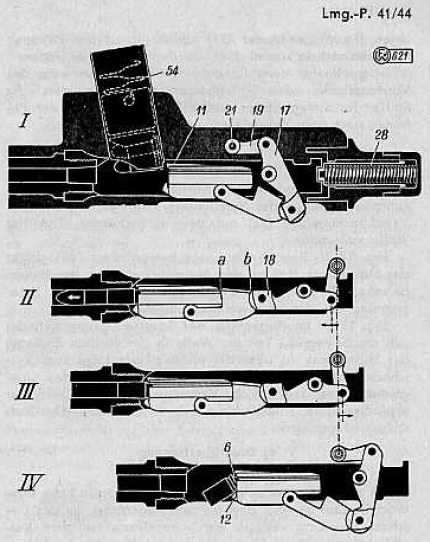
Furrer claimed that his design would be quick and easy to put into production, which was pretty much a load of high-quality baloney. The gun turned out to be one of the most expensive production submachine guns ever made, and only a few were built before the design was modified to the 41/44 standard, which simplified many elements. Ultimately, only about ten thousand were made before the Swiss threw up their hands and focused on build the MP43/44, which was a far simple licensed copy of the Finnish M31 (Suomi) submachine gun.
Visually, the MP4/44 can be distinguished from the early MP41 by having a bayonet lug, two-position fixed rear sight, vertical forward grip, and protective wings on the front sight.
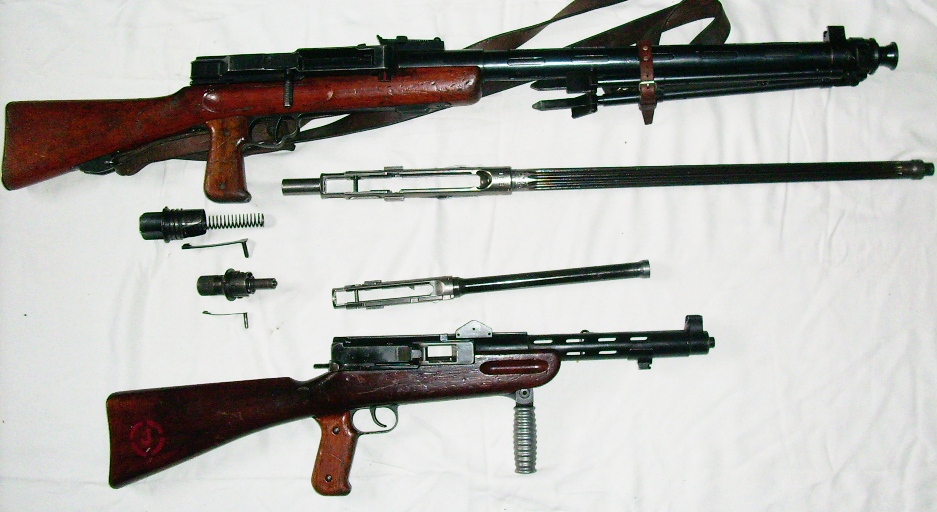
We have two editions of the Swiss Army submachine gun manual, one from 1944 and one from 1955. These cover both the MP43/44 (Suomi copy) and the MP41/44, and you can download them from the MP 41/44 page in the Vault or right here:
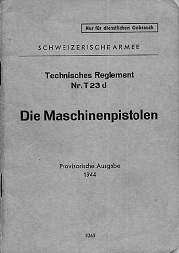
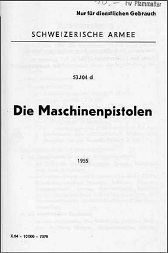

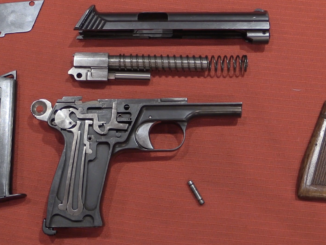
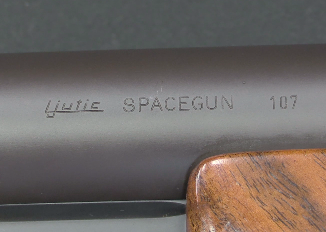
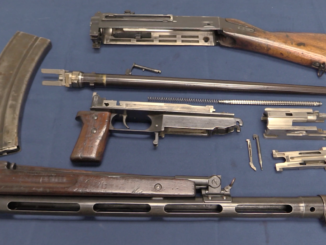
Thanks again Ian, for a very comprehensive text on the MP41. To say that Herr Furrer developed a bit of a fixation about toggle locking actions is an understatement. As for the MP41, I doubt such a design could have been put into production (and actually adopted) in any country other than Switzerland, given their penchant for intricate machinery. They might have tried to sell it in South America, but I doubt such efforts – if they happened in the first place – ensured any new customers…
Ian,
Many thanks once again for sharing.
I know this is a long shot, and I’m probably chasing a will o’ the wisp, but…
does all of that complicated action give a sort of constant impulse recoil effect?
I know that an open bolt blowback is part way there anyway, with the recoil impulse beginning when the trigger is pulled,
but then most designs spoil it when the recoiling bolt slaps the end cap or the recoil spring goes solid (Patchett as he does with most problems, avoided that one too, with two strengths of recoil spring and the weight in between them which bounced back and forth slowing the recoiling bolt with multiple impacts)
Does the Furrer have a more continuous recoil impulse as a saving grace?
On a related note, the blowback Winchester model 1907 fired a round with almost .357max performance, has anyone fired one – what is the recoil like compared to say a locked breech .30 carbine?
I copied that description verbatim. I was wondering….lol good post Ian
As is often the case the reality doesn’t always follow the legend. While the guns were more complex than the others available it was still a good subgun and quite reliable. The were also accurate and easy to operate. Since most of the country was familiar with fine machining operations the complexity wasn’t such a bad thing at the time. The design was as you noted a smaller version of the LMG 25 which was an excellent weapon so it wasn’t something new and untested. The biggest problem was the cost and time to build them hence the license for building the cheaper SUOMI copy- MP43/44. You may want to look further into Herr Furrer’s designs to see that there were other toggle action weapons of many sizes. The TB41 was a very well made, accurate and low recoil anti-tank rifle in 24mm. There was a version used in the PZ38 tank, an anti-aircraft version and I believe there was an even larger version. We have to remember that for our purposes these weapons don’t make much sense. We take our stuff all over the world and use them in many different environments. The Swiss had to design for only one environment and didn’t need to transport stuff thousands of miles. Its always easy to judge things using your own requirements as a basis but using the parameters of the user is tougher to do.
Frank